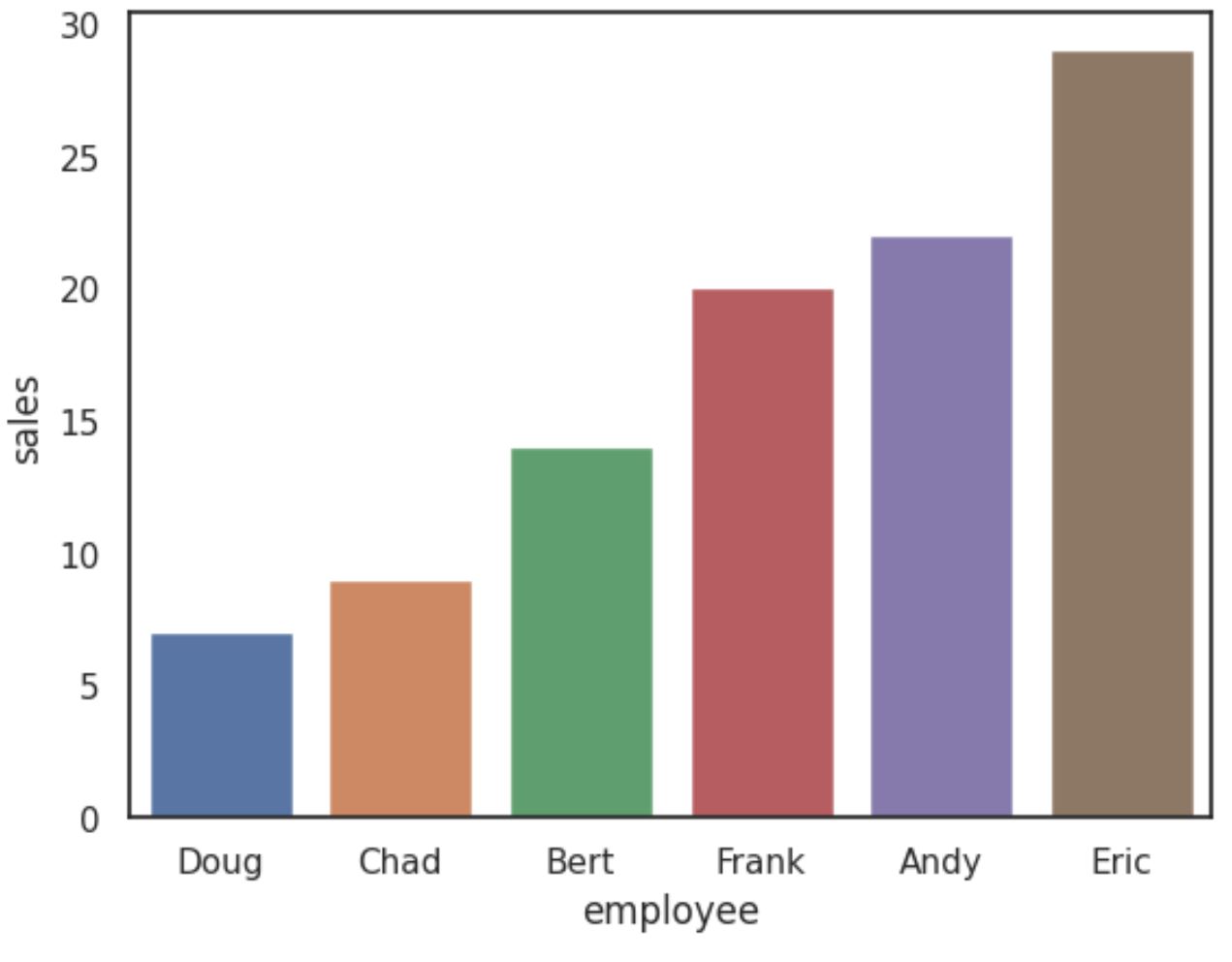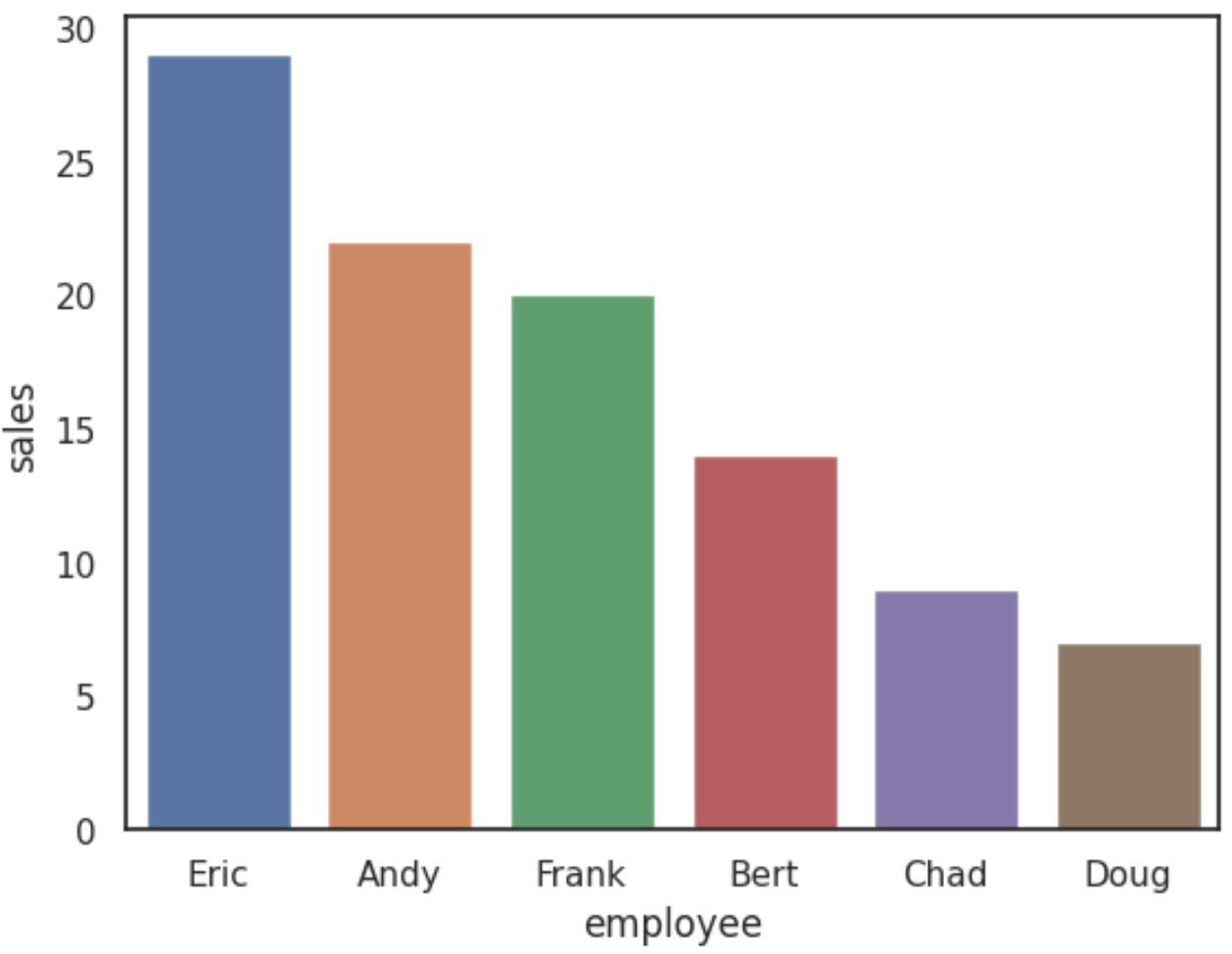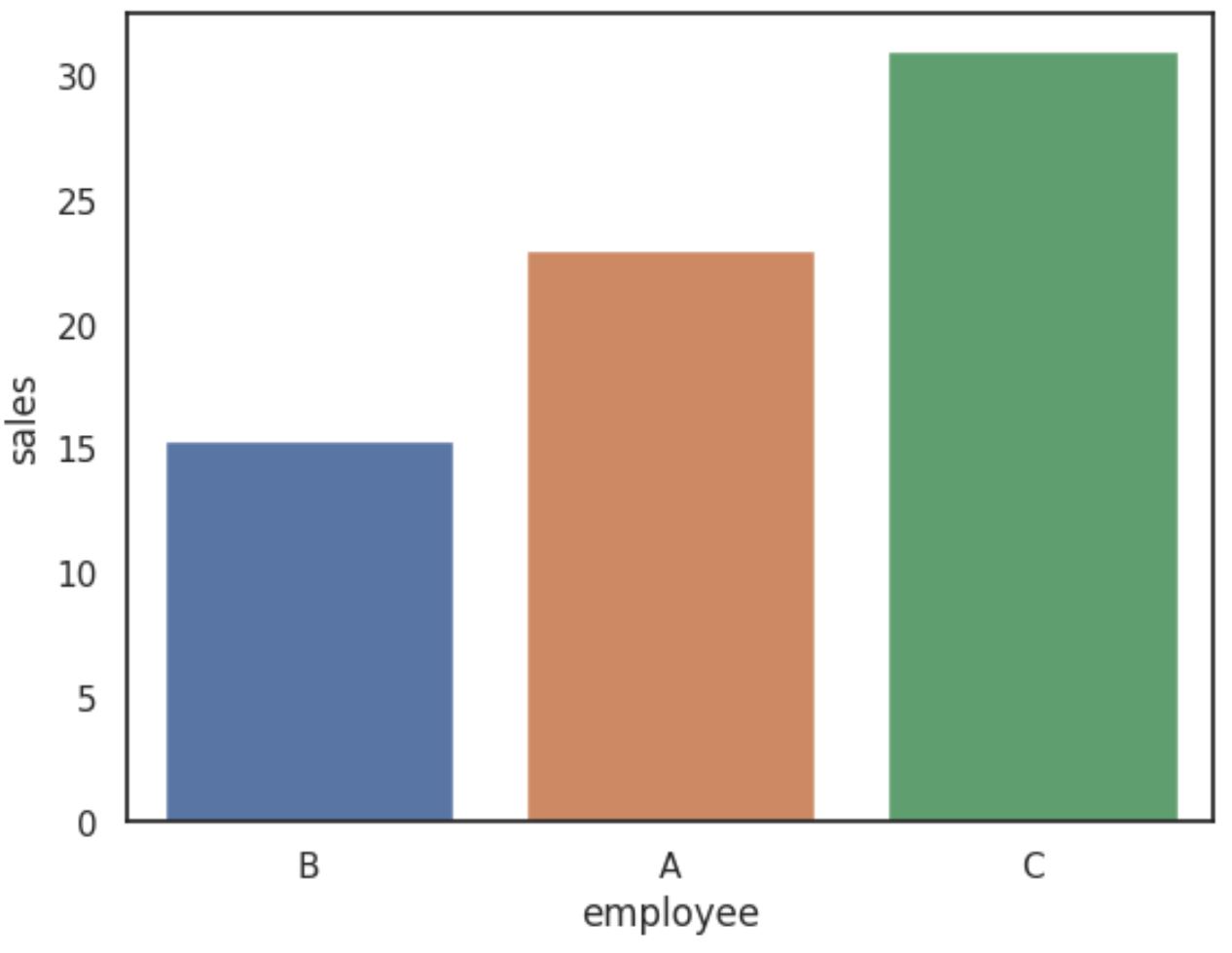วิธีเปลี่ยนลำดับของแท่งใน seaborn barplot
คุณสามารถใช้วิธีการต่อไปนี้เพื่อเปลี่ยนลำดับของแท่งในพล็อต ทางทะเล :
วิธีที่ 1: แถบจัดเรียงใน Barplot ที่สร้างจากข้อมูลดิบ
sns. barplot (x=' xvar ', y=' yvar ', data=df, order=df. sort_values (' yvar '). xvar )
วิธีที่ 2: แถบจัดเรียงใน Barplot ที่สร้างจากข้อมูลที่รวบรวม
sns. barplot (x=' xvar ', y=' yvar ', data=df, order=df_agg[' xvar ']
ตัวอย่างต่อไปนี้แสดงวิธีการใช้แต่ละวิธีในทางปฏิบัติ
ตัวอย่างที่ 1: แถบการจัดเรียงใน Barplot ที่สร้างจากข้อมูลดิบ
สมมติว่าเรามี DataFrame แพนด้าต่อไปนี้ซึ่งมีข้อมูลเกี่ยวกับยอดขายรวมของพนักงานหลายคนของบริษัท:
import pandas as pd
#createDataFrame
df = pd. DataFrame ({' employee ': ['Andy', 'Bert', 'Chad', 'Doug', 'Eric', 'Frank'],
' sales ': [22, 14, 9, 7, 29, 20]})
#view DataFrame
print (df)
employee sales
0 Andy 22
1 Bert 14
2 Chad 9
3 Doug 7
4 Eric 29
5 Frank 20
เราสามารถใช้ไวยากรณ์ต่อไปนี้เพื่อสร้าง barplot ซึ่งแท่งจะถูกเรียงลำดับจากน้อยไปหามากตามมูลค่า การขาย :
import seaborn as sns #create barplot with bars sorted by sales values ascending sns. barplot (x=' employee ', y=' sales ', data=df, order=df. sort_values (' sales '). employee )

หากต้องการจัดเรียงแท่งตามลำดับจากมากไปน้อย เพียงใช้ ascending=False ในฟังก์ชัน sort_values() :
import seaborn as sns #create barplot with bars sorted by sales values descending sns. barplot (x=' employee ', y=' sales ', data=df, order=df. sort_values (' sales ', ascending= False ). employee )

ตัวอย่างที่ 2: แถบการเรียงลำดับใน Barplot ที่สร้างจากข้อมูลที่รวบรวม
สมมติว่าเรามี DataFrame แพนด้าต่อไปนี้ซึ่งมีข้อมูลเกี่ยวกับยอดขายรวมของพนักงานหลายคนของบริษัท:
import pandas as pd
#createDataFrame
df = pd. DataFrame ({' employee ': ['A', 'A', 'A', 'B', 'B', 'B', 'C', 'C', 'C'],
' sales ': [24, 20, 25, 14, 19, 13, 30, 35, 28]})
#view DataFrame
print (df)
employee sales
0 to 24
1 to 20
2 to 25
3 B 14
4 B 19
5 B 13
6 C 30
7 C 35
8 C 28
เราสามารถใช้ไวยากรณ์ต่อไปนี้เพื่อคำนวณมูลค่า การขาย เฉลี่ย โดยจัดกลุ่มตาม พนักงาน :
#calculate mean sales by employee df_agg = df. groupby ([' employee '])[' sales ']. mean (). reset_index (). sort_values (' sales ') #view aggregated data print (df_agg) employee sales 1 B 15.333333 0 to 23.000000 2 C 31.000000
จากนั้นเราสามารถใช้ไวยากรณ์ต่อไปนี้เพื่อสร้าง barplot ในทะเลที่แสดงยอดขายเฉลี่ยต่อพนักงานโดยแถบแสดงตามลำดับจากน้อยไปหามาก:
import seaborn as sns #create barplot with bars ordered in ascending order by mean sales sns. barplot (x=' employee ', y=' sales ', data=df, order=df_agg[' employee '], errorbar=(' ci ', False ))

แกน X จะแสดงชื่อของพนักงาน และแกน Y จะแสดงมูลค่าการขายเฉลี่ยของพนักงานแต่ละคน
แหล่งข้อมูลเพิ่มเติม
บทช่วยสอนต่อไปนี้จะอธิบายวิธีการทำหน้าที่ทั่วไปอื่นๆ ในทะเล:
วิธีแสดงค่าบน Seaborn Barplot
วิธีสร้าง barplot ที่จัดกลุ่มใน Seaborn
วิธีการตั้งค่าสีของแท่งใน barplot ของ Seaborn